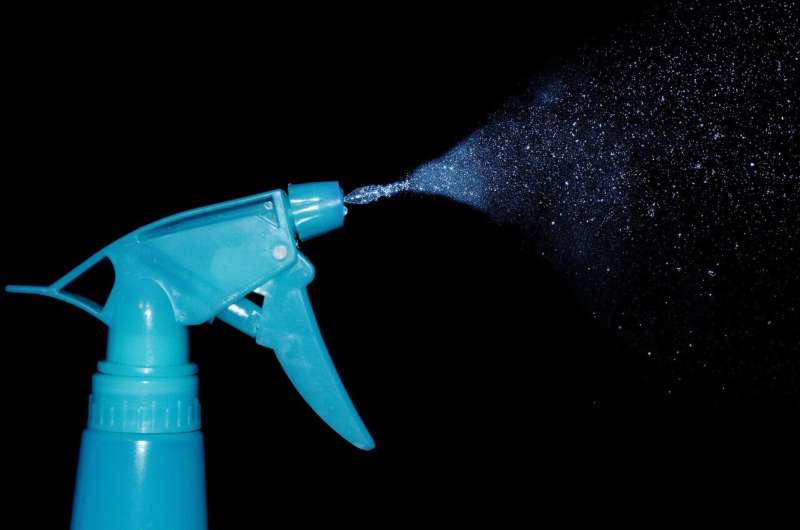February 28, 2022 report
Commercial floor cleaners found to produce as much aerosol pollution particles as public roads

A team of researchers from Indiana University, Purdue University, Université de Lille, Center for Energy and Environment and Edelweiss Technology Solutions, LLC, has found that people using commercial cleaners with certain chemicals in them may be exposed to as much particle pollutants as if they were sitting beside a public road. In their paper published in the journal Science Advances, the group describes their study of air samples taken in a room being mopped with a commercial floor cleaner and what they found by doing so.
Makers of commercial cleaners have over the years taken to adding chemicals to their cleaners to make them smell nice—pine scents, for example, are quite common. But in so doing, the makers of such chemicals may be exposing their customers to high levels of secondary organic aerosols (SOAs).
SOAs are types of aerosols that are known to irritate the lungs when inhaled. Some of the main sources are combustion engines, such as those found in most automobiles. In this new effort, the researchers noted that prior work by others has shown that when monoterpenes interact with molecules such as ozone, SOAs are formed. Noting also that many of the chemicals that are used to make commercial cleaners smell better contain monoterpenes, the researchers wondered if such cleaning products are exposing people to SOAs. To find out, they outfitted a room at their lab with several devices that allowed for measuring monoterpenes, ozone levels and SOAs. They then used a commercial cleaner they knew contained monoterpenes to improve its smell, to mop the floor.
In studying the air samples, the researchers found high levels of monoterpenes that interacted with natural ozone in the air. The result was high levels of SOAs being produced. The researchers found that the levels in the room as a person mopped a floor were similar to those a person would experience if they were sitting next to a busy road. In some cases, they found levels similar to sitting next to a road for up to six hours. They suggest more work is needed to find out if the SOAs being made by chemicals in cleaning agents are doing more than irritating the lungs of people who use them.
More information: Colleen Marciel F. Rosales et al, Chemistry and human exposure implications of secondary organic aerosol production from indoor terpene ozonolysis, Science Advances (2022). DOI: 10.1126/sciadv.abj9156
Journal information: Science Advances
© 2022 Science X Network





















